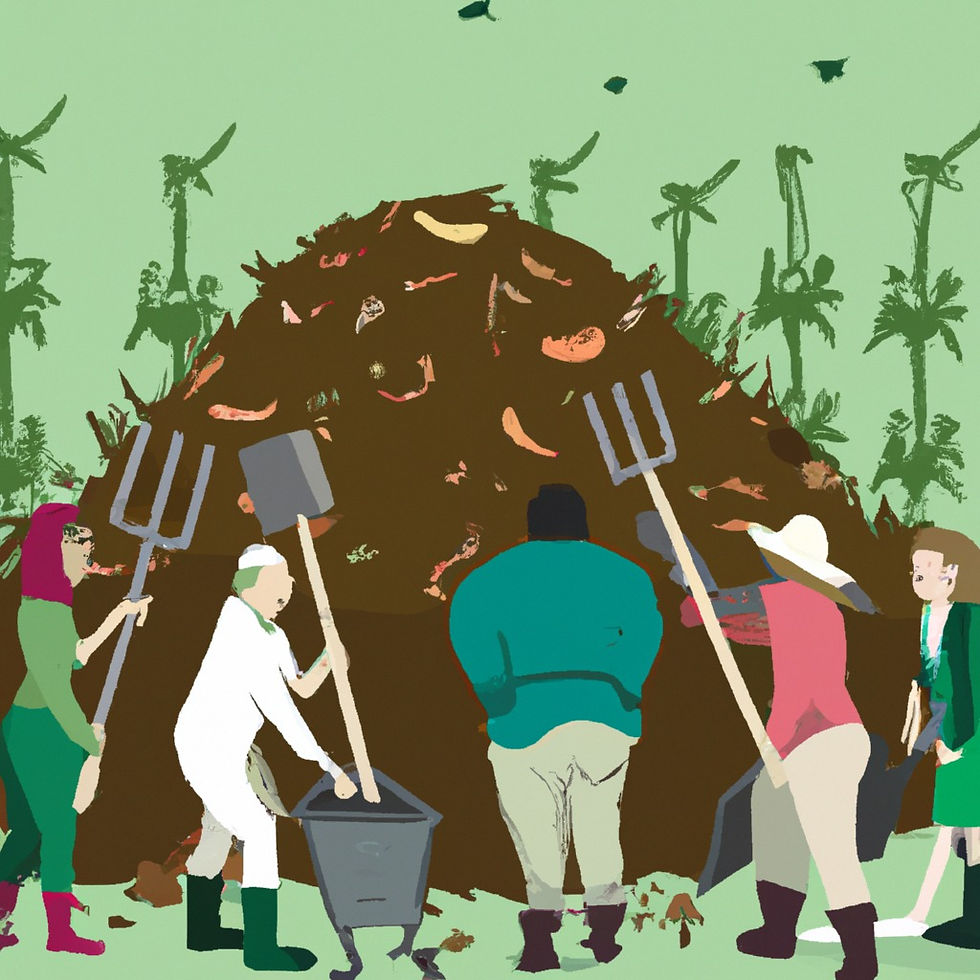As the world grapples with the urgent need to address climate change and environmental degradation, regenerative earth technology has emerged as a powerful solution. At the heart of this movement is composting, a centuries-old practice that is gaining renewed recognition for its potential to heal our planet. In this article, we'll explore the synergy between composting and regenerative earth technology, highlighting their role in creating a more sustainable and resilient future.
Composting: Nature's Recycling
Composting is a natural process in which organic materials like kitchen scraps, yard waste, and even manure break down into nutrient-rich soil conditioner. The magic happens when beneficial microorganisms, such as bacteria and fungi, feast on this organic matter, transforming it into humus—the black gold of gardening.
The Environmental Benefits of Composting:
1. Carbon Sequestration: Composting returns carbon to the soil, acting as a carbon sink. This helps reduce atmospheric carbon dioxide levels, a major driver of climate change.
2. Soil Health: Compost enriches soil with vital nutrients, improves structure, and enhances its water-holding capacity, reducing the need for synthetic fertilizers and promoting plant growth.
3. Waste Reduction: Composting diverts organic waste from landfills, reducing methane emissions, a potent greenhouse gas.

Regenerative Earth Technology: A Holistic Approach
Regenerative earth technology encompasses a range of practices that aim to restore and enhance the health of ecosystems. It goes beyond sustainability by actively regenerating natural systems, such as soil, forests, and waterways. Composting fits seamlessly into this framework.
Composting as a Regenerative Practice:
1. Soil Regeneration: Compost revitalizes depleted soils, increasing their organic matter content, microbial diversity, and overall fertility. Healthy soils act as carbon stores, mitigating climate change.
2. Biodiversity Enhancement: Composting encourages beneficial soil organisms, creating a thriving underground ecosystem that supports plant health and resilience.
3. Water Management: Compost-improved soil can absorb and retain water more efficiently, reducing runoff and soil erosion.
Community and Global Impact:

The adoption of composting and regenerative earth technology isn't limited to individual gardens. Communities, businesses, and even entire regions can implement these practices at scale to address broader environmental challenges:
1. Urban Composting: Municipal composting programs reduce waste, lower greenhouse gas emissions, and create valuable local resources.
2. Agricultural Transformation: Farming practices that incorporate composting contribute to soil health, increase crop yields, and enhance food security.
3. Ecosystem Restoration: Regenerative practices can help repair degraded lands, from deforested areas to overused pastures, promoting biodiversity and resilience.
Composting and regenerative earth technology are not isolated solutions but integral components of a more sustainable and harmonious relationship with our planet. By embracing these practices, we empower ourselves to be stewards of the Earth, working towards a future where human activities nurture, rather than deplete, the natural world. Together, we can cultivate a world that thrives on the regenerative power of composting and sustainable living, leaving a healthier planet for future generations.






Comments